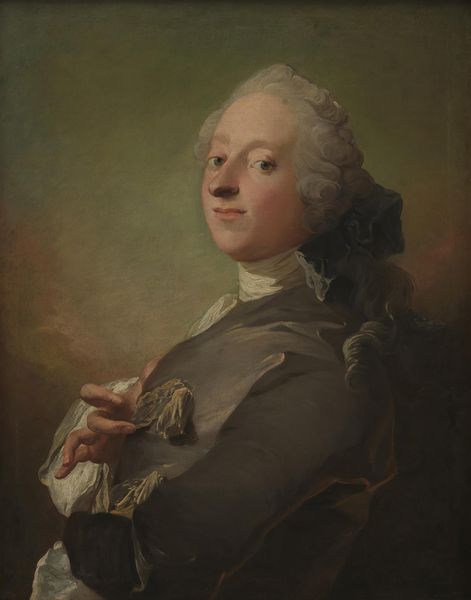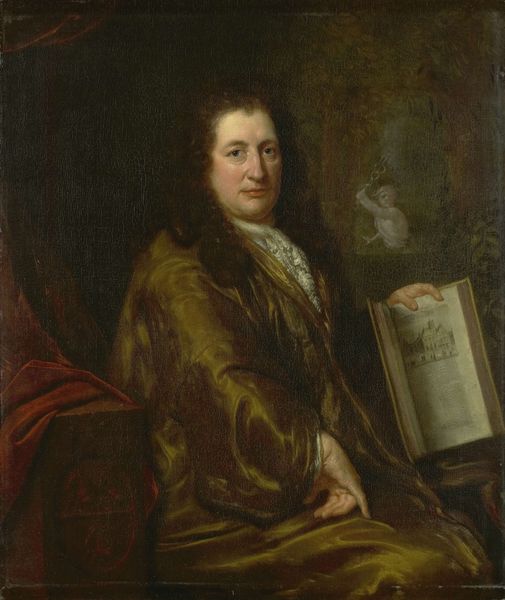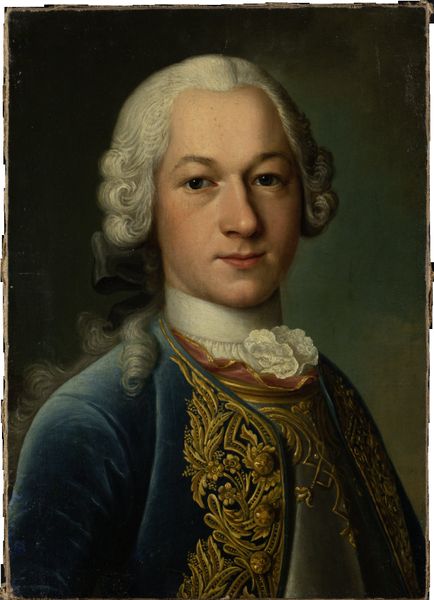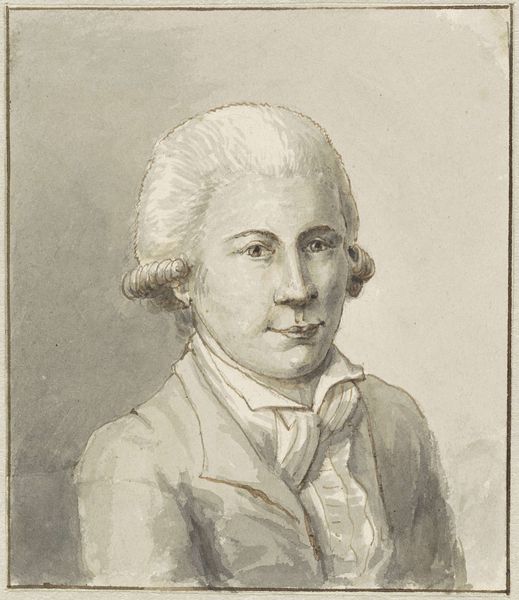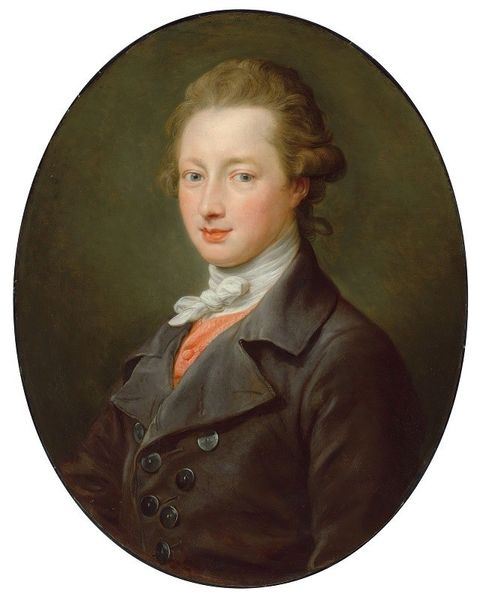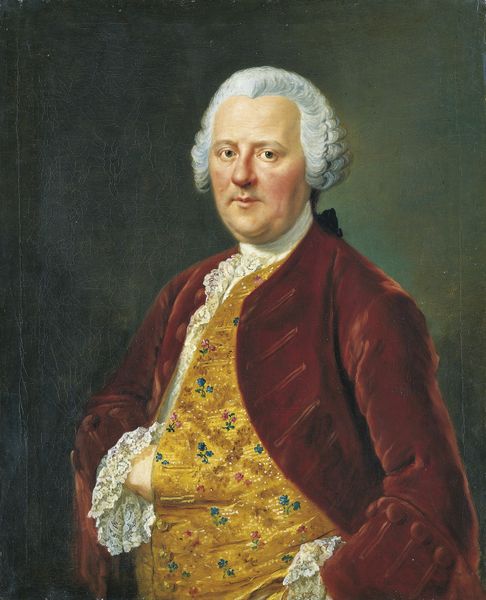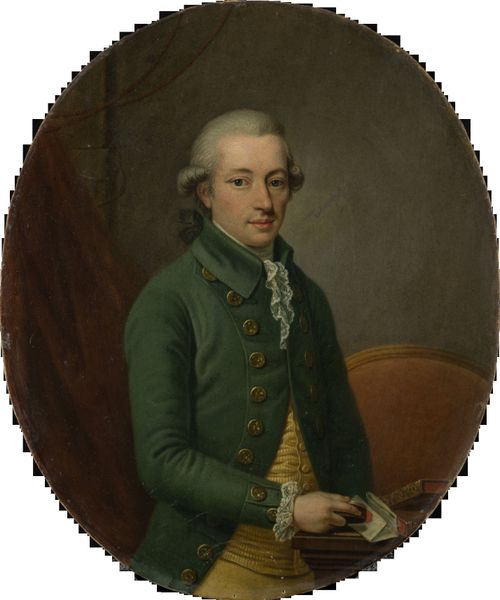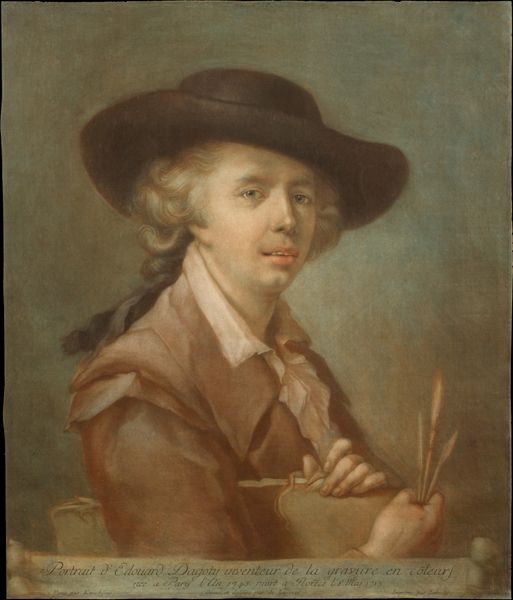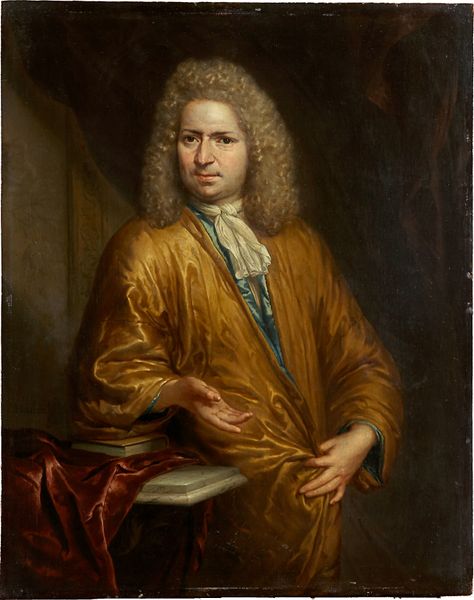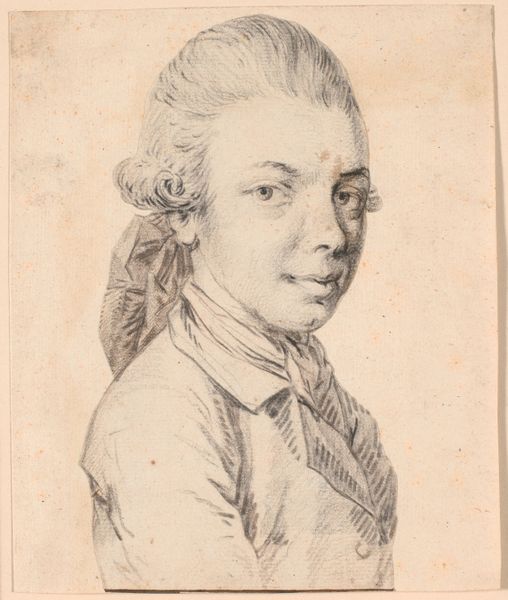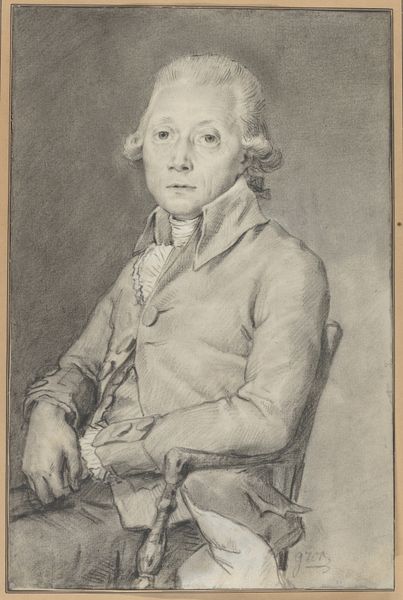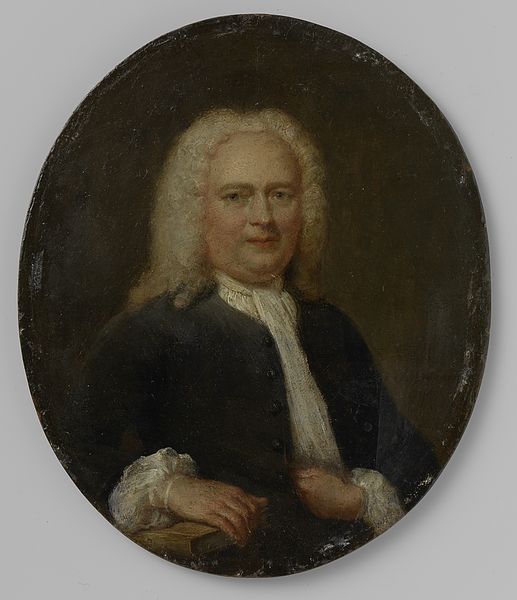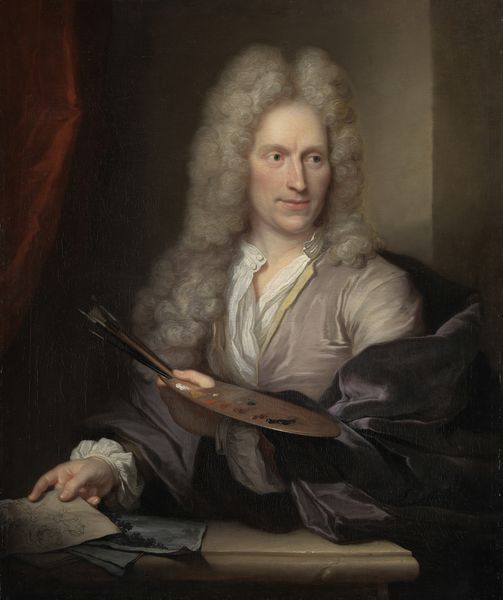
Dimensions: 93.4 x 73.0 cm
Copyright: Public Domain
Curator: We’re looking at “Portrait of a Composer,” a painting created sometime between 1785 and 1795, currently housed at the Städel Museum. The artist is, alas, unknown. Editor: The somber mood really strikes me. It’s a very focused, almost melancholic image. The muted colors also contribute to that feeling. And oil on canvas - can you feel the weight? Curator: Absolutely. Oil paint during this period was meticulously crafted, often involving extensive grinding and mixing of pigments to achieve specific effects. It would be interesting to know where these pigments came from. As for mood, look at the pen he's holding; it signifies not just his profession but a conduit for his emotions, the intangible turning into a visible form. The very image of creating! Editor: The materiality is so present; the weave of the canvas, the density of the paint giving body to his face. It draws attention to the labour involved in crafting the painting. Also, what about the social role this portrait played? Was it commissioned or created as an homage after his death? Curator: An excellent point. The subject’s clothing, the quality of the canvas—all indicate a certain level of patronage, reinforcing social hierarchies of the time. His focused expression almost portrays the mental and physical work of composing as an act of labor as well. This posture also implies an introspective mind at work, and invites the viewer into that contemplative space. Editor: It brings us close to this composer's inner world, mediated, of course, through the artist’s chosen materials and skill, but still… palpable. It’s a reminder that art always has material conditions that define its place in a cultural economy. Curator: Agreed. When we explore how symbols reflect cultural memories and shared humanity, it leads us to consider the socio-economic realities underpinning the creation. Art speaks of individuals, culture and, essentially, materiality! Editor: Absolutely! These things aren't separate - they dance together, forming our understanding and, frankly, its place in history and the human heart.
Comments
No comments
Be the first to comment and join the conversation on the ultimate creative platform.

